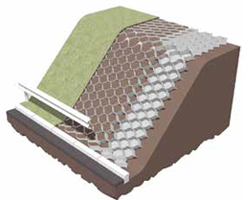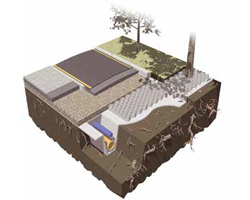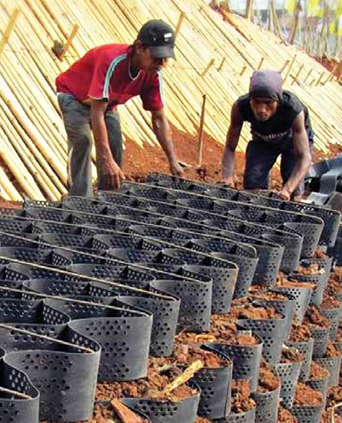GEOSYNTHETICS
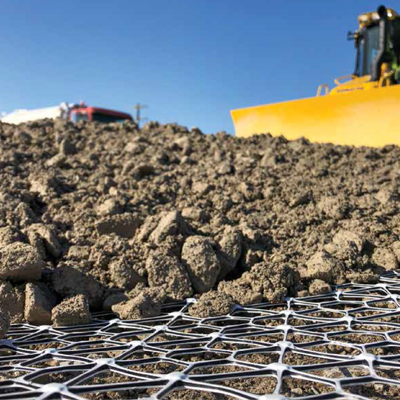
Muna Noor’s comprehensive range of geosynthetic products offer cutting-edge solutions for construction, civil engineering, and environmental applications. Geosynthetic materials are engineered to enhance the performance, durability, and sustainability of various projects, making them indispensable for modern infrastructure developments. Geosynthetics can be broken down into six main categories:
Geotextiles: Permeable fabrics used in geotechnical applications
Geocomposites: Combination of one or more geosynthetic materials
Geogrids: Reinforcement material for soil and retaining walls
Geomembranes: Impermeable synthetic membrane or barrier
Drain Cells: Ventilate concrete to reduce heat stress and cracking
Geocells: 3D cellular confinement systems for land stabilisation
 Geotextiles
Geotextiles

- Reinforce soil structures
- Enhance drainage capabilities
- Reduce soil erosion
- Improve road and pavement longevity
- Width: 4.5m
- Length: 50 – 150m
- Colour: White
- Standard geotextile
- Root guard
- Salt barrier
- Geobags
- Weed guard
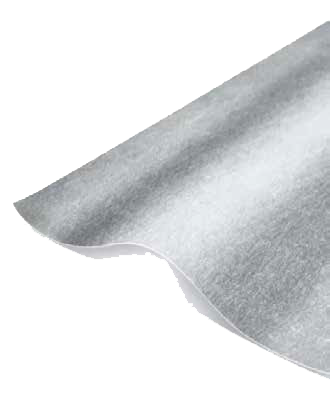
![]() Geocomposites
Geocomposites
- Geonet core between two geotextile filters
- Geonet core between a geotextile and a geomembrane
Geocomposite are the perfect solution for the function of drainage:
- Alongside roads
- Within slopes
- Around culvers, basements and reservoirs

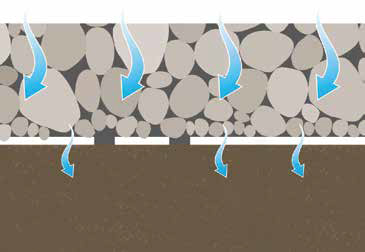
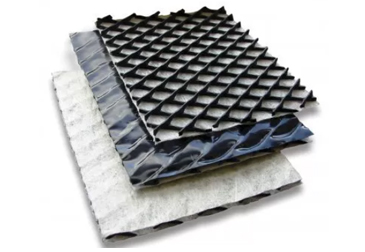
- Water and wastewater management
- Drainage
- Municipal waste landfills
- Stadiums and golf courses
- Highways and roads
- Tunnels
- Landfills and mining
- Soil reinforcement for civil construction
 Geogrids
Geogrids
How do geogrids work?
Geogrids have openings, called apertures, which allow aggregate to interlock with the grid and the other aggregate, creating a stable base and providing support to the load above.
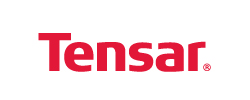
- Increase soil load-bearing capacity
- Prevent soil settlement
- Enhance slope stability
- Extend the life of structures
- InterAx® geogrids
- TriAx® geogrids
- Uniaxial geogrids
- Biaxial geogrids
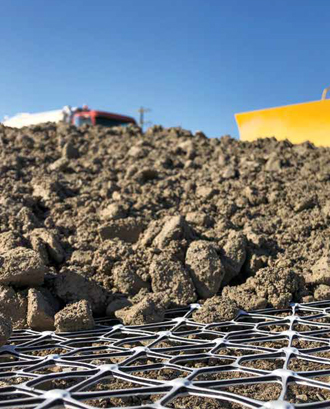

InterAx® geogrids:
The newest of the geogrid technology, utilising the design of the H-Series and enhancing the strength and function with three-layer extrusion technologies.

TriAx® geogrids:
The diamond pattern of the TriAx® geogrid improve stress forces and improve load dispersion.

Biaxial geogrids:
The original geogrid, still trusted globally for ground reinforcement.

Uniaxial geogrids:
Used for retaining walls and stress reinforcement in one direction.
 Geomembranes
Geomembranes
Geomembranes are available in high-density polyethylene (HDPE), and linear low-density polyethylene (LLDPE), and can come with a smooth or textured surface depending on the application.
- Agricultural and nurseries
- Marine construction
- Manufacturing
- Mining
- Width: Up to 8m
- Length: Up to 300m
- Thickness: 0.5mm – 3mm
- Colour: Black or white
- Finish: Smooth or textured, single/double-sided
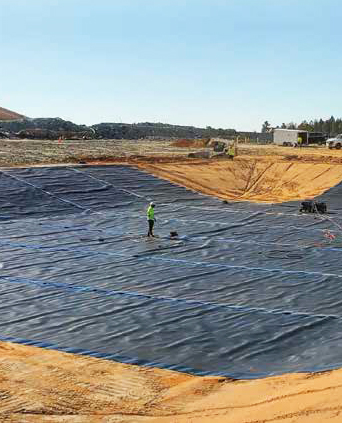
 Drain Cells
Drain Cells
- Modular Design: Drain cells are typically modular in design, allowing for easy installation and customization to fit various project requirements.
- High Load-Bearing Capacity: Despite their lightweight structure, drain cells boast a high load-bearing capacity, making them suitable for supporting heavy traffic loads in landscaping and construction applications.
- Water Storage: The cells feature a unique configuration that allows for the storage and management of excess water, preventing waterlogging and flooding while replenishing groundwater levels.

- Root Resistance: Some drain cell systems are engineered with root-resistant properties, making them ideal for green roof installations and landscaped areas where vegetation growth is desired.
- Environmental Benefits: By facilitating efficient water management and reducing runoff, drain cells contribute to sustainable urban development and help mitigate the adverse effects of urbanization on the environment.
- Versatility: Drain cells are versatile solutions that can be used in a variety of applications, including green roofs, retaining walls, sports fields, and landscape gardens, providing flexibility in design and functionality.
- Easy Maintenance: Drain cells require minimal maintenance once installed, reducing the need for frequent upkeep and ensuring long-term performance and durability.
- Compatibility: Drain cells are compatible with a range of drainage and filtration systems, allowing for seamless integration into existing infrastructure and SuDS schemes.
- Cost-Effective: Due to their efficiency in managing surface water runoff and their long service life, drain cells offer a cost-effective solution for sustainable water management in both residential and commercial projects.
 Geocells
Geocells
- Soil stabilisation
- Erosion control
- Tree root protection
- Flood defense
- Load platforms
- Retaining walls
- Weld spacing: 330mm – 712mm
- Length: 7m
- Cell depth: 75mm – 300mm
- Colour: Grey
